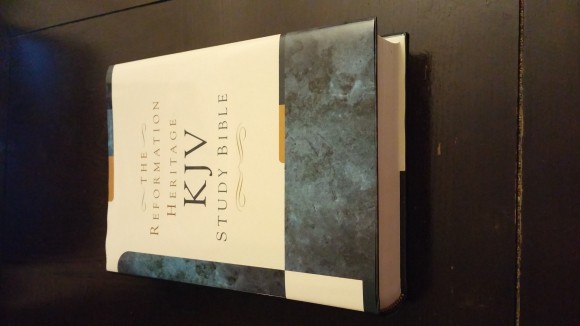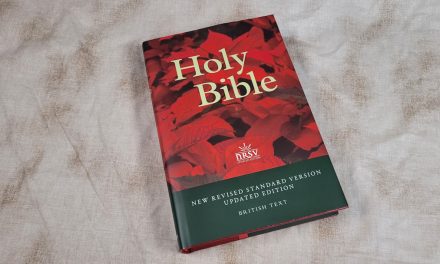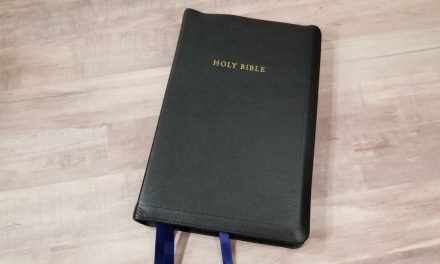This is the most impressive study Bible that I have seen since the release of the ESV Study Bible, and that says quite a bit. It is as close to the perfect “Reformed” study Bible that you can get. In terms of content, there are only two perceived deficiencies, both of which I will address right away and both of which will not be a problem to most Reformed Theology Adherents: As is a frequent point of contention for me, I would like to see wider margins. The 2nd perceived deficiency is that the London Baptist Confession is not listed in the Creeds and Confessions session. (This is understandable because most reformed churches are Presbyterian in their church polity and given the presence of the Three Forms of Unity, this Bible is designed for those in the Continental Reformed tradition.) That being said, neither of my gripes actually detracts from this amazing Bible
What makes this one of the best study Bibles available?
Creeds and Confessions
The Creeds and Confessions section follows the text of the Bible and, after the Bible Text itself, this is the most important feature. For those who are new to Reformed Theology, this is absolutely where you want to start; if you are not new to Reformed Theology, this will be an excellent refresher.
The Creeds and Confessions section includes the following:
- Apostle’s Creed
- Nicene Creed
- Athanasian Creed
- The Three Forms of Unity: Belgic Confession, Heidelberg Catechism, and the Canons of Dort
- Westminster Confession
- Westminster Shorter Catechism
- Westminster Larger Catechism
The Three Forms of Unity represent the Continental Reformed Church’s approach to Reformed Theology while Westminster represents the Presbyterian (English and Scottish Reformed) approach. It would be difficult to expand upon the differences in approach without having all the texts opened in front of you.
Thoughts for personal and family worship for every chapter of the Bible
This is the feature that stands out the most in this Bible. It can be difficult to know where to begin a study, or how to guide worship in your home (or even a small group Bible study for that matter). These thoughts are included in every chapter and provide a few discussion points which can be used as a standalone feature or as a baseline to guide you into more depth.
How to live as a Christian
There approximately 36 articles on living the Christian Life. They cover such topics as Coming to Christ, The Fear of God, Self-Denial etc. These articles can and should be used as a foundation for discipleship.
20 Centuries of Church History
It’s important to know where you come from and in these 20 articles will provide a great background on our faith, what led up to the Protestant Reformation, and how our faith can work itself out in our world today.
50 Articles on Key Christian Teachings
These articles cover foundational teachings in Theology Proper (Doctrine of God), Ecclesiology (the Church), Christology (the Person and Work of Christ), Hamartiology (Doctrine of Sin), Eschatology (Last Things), Soteriology (Doctrine of Salvation including 5 Points of Calvinism), and Creation.
As to the eschatological teachings, being that they are reformed, they will typically be amillennial, or postmillennial. I confess that being a Reformed Baptist with Dispensational Premillenial Eschatology (no that is not a typographical error, I belong to the same school of thought as MacArthur), I did not read them in depth. At the same time, the other articles were absolutely terrific. If you were to cover one article per week in a study environment, you would have a solid foundation in theology in a year.
Bible Text, Format, Page Layout
This is the classic King James Version, laid out in a double column verse by verse format. The Bible text itself occupies approximately half of the page with the notes occupying the bottom half of the page. This particular version is not a reference edition, which does not particularly bother me. I have a tendency to not use references when I am studying, with the exception of my Thompson Chain or Westminster Reference Bibles as, most of the time, they do not follow my train of thought.
Paper, Binding, Overall Quality
Every Reformation Heritage Bible is smythe sewn, even the hardcover that I am reviewing. This is uncommon for many hardcover Bibles and is quite welcome here. For a Bible with so many features, any other choice of binding would not make sense. While it may not be your primary Bible, or your teaching Bible if you teach, it is absolutely intended to be used daily for study and the sewn binding guarantees that it will go the distance.
The closest paper that I have seen is in the Thompson Chain Reference Bible. The opacity is wonderful; I cannot imagine there would be bleed through with a liquid highlighter (I actually prefer ball point pen).
I would give this Bible a 9.75. I would rate it a ten if we had wide margins to work with; it would be phenomenal to have personal notes alongside the excellent notes provided by the publisher.
Whether you are Reformed or not, you should buy this Bible. It will make a wonderful addition to your library.

























































Recent Comments